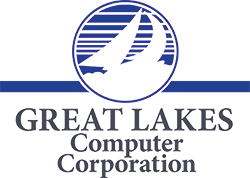[vc_row][vc_column][vc_column_text]
 The New World of DLP: Cloud Computing Security
The New World of DLP: Cloud Computing Security
Most tech departments have experienced the familiar issue of an employee becoming frustrated with his or her privileges on the company network. Workers want to be able to install and run the programs they feel they need, and they do not always react well to having to involve another person or department in decisions they feel should be theirs alone.
The truth, however, is that many of the practices and policies that restrict employees are there for good reasons. In addition to keeping workers from inadvertently introducing tech problems into the system, such policies also serve the essential function of data loss prevention. Ever since the dawn of the business computer age, small- and medium-sized enterprises have spent significant sums to keep sensitive information within proper boundaries while also ensuring that it is properly backed up. Sometimes, this means locking end-users away from functions they might find convenient.
DLP and the cloud
When cloud computing enters the equation, DLP concerns must take on an even more central role in IT decision-making. The cloud makes it possible for businesses to enjoy collaboration in real-time with partners and suppliers as well as customers. Productivity has increased as a result, but so has the potential for the escape of sensitive data. Being able to collaborate with literally any internet-connected computer on the planet via applications such as Google Docs has made it more critical than ever before to control all parameters related to the sharing of documents.
Technology is keeping up with these needs, however. Real-time notification is one IT solution that can help CIOs and IT staffs to monitor cloud usage so that employee activity can be closely tracked with an eye toward providing additional training as needed. As computers can generate a fantastic amount of data in a short span of time, however, it is also important to employ IT solutions when making use of notification data. Information systems are perfectly capable of scanning for anomalous information so that human personnel are provided with alerts to draw their attention to pressing issues, though, of course, the raw data is also available for human review in such situations.
DLP and cloud backup
Another type of data loss prevention concerns itself with maintaining adequate backups so that an entire database cannot be wiped out forever. It is in this regard that the cloud DLP solutions truly shine. Using the cloud, companies can create and maintain a completely up-to-date backup that reflects changes made only a few seconds earlier. In the event that full disaster recovery is needed, a company so protected may be able to get their systems up and running again in a very short time – and with no loss of mission-critical data.
[/vc_column_text][/vc_column][/vc_row]

